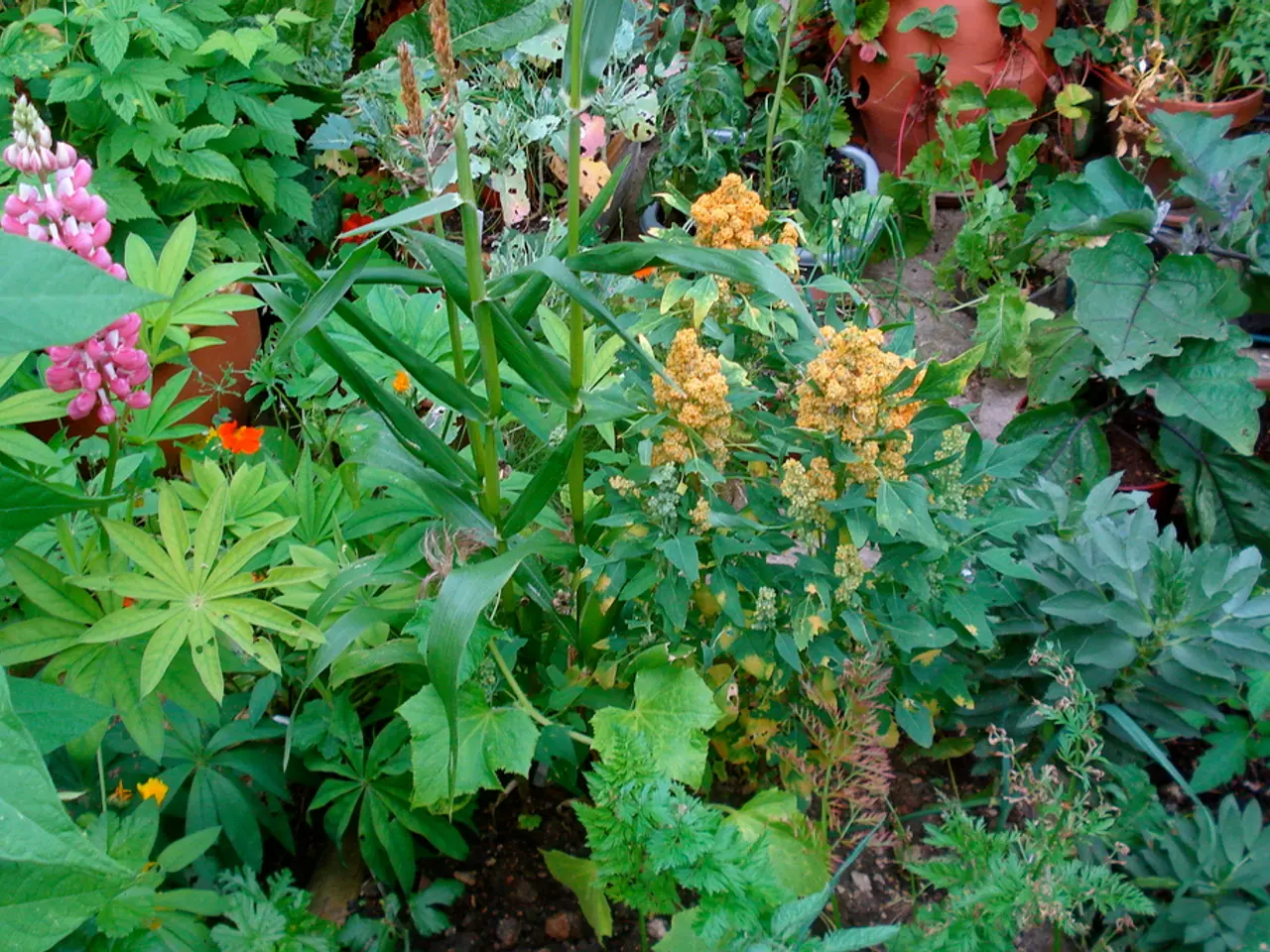Cultivating the Three Sisters for Optimal Harvest
In the world of gardening, the Three Sisters method – a traditional Native American practice that combines corn, beans, and squash – remains a popular choice for its natural pest and nutrient management. But what if you don't have a large backyard to cultivate this garden? Fear not, as this miniature ecosystem can be adapted for container gardening.
To start, you'll need large, deep containers (at least 10–15 gallons) to support the tall corn stalks and root spaces for squash and beans. This ensures enough soil volume for growth and nutrient sharing.
First, plant the corn, as it takes the longest to establish. Corn acts as the natural support for the climbing beans. Once the corn is about 6–8 inches tall, plant pole beans around it, so they can climb the stalks. Finally, sow bush or vining squash around the outer edge of the container to spread out and provide ground cover, which suppresses weeds and conserves moisture.
Choose smaller, compact varieties of each crop suitable for container growth to avoid overcrowding. Use nutrient-rich potting soil and consider mild fertilization or adding nitrogen-fixing amendments with the beans to compensate for the limited nutrients in containers.
Ensure containers have excellent drainage to avoid waterlogging, and position them where they receive full sun for best growth.
Proper pest management and soil testing help maintain healthy nutrient levels. Be alert for pest damage, which can cause similar symptoms to nutrient imbalance, such as yellowing leaves, stunted growth, or poor fruit development. Pest repellent plants like marigolds or nasturtiums provide natural protection, reducing pest issues. Incorporate companion herbs like basil or mint to enhance flavor and deter pests.
Check your soil pH first, as it affects nutrient absorption. Aim for a balanced level suited to your crops. Over 80% of native crops can adapt well to traditional planting methods, making it possible to incorporate native crop compatibility and non-traditional plant options into the three sisters method.
By planting these alongside your corn, beans, and squash, you'll create a healthier, more resilient garden that maximizes yield and minimizes chemical use. Adjust planting times and choose resilient varieties to help your garden withstand weather fluctuations, as climate change is increasing weather variability, impacting crop success in Three Sisters gardening.
Experimenting with non-traditional plants like herbs or flowers can enhance soil health and attract beneficial insects, further strengthening your garden's natural defenses. Embracing this balance, your harvest will flourish as an affirmation to nature's enduring wisdom.
- In a limited home-and-garden space, you can still grow the Three Sisters garden by using large, deep containers and choosing suitable, compact varieties for container growth.
- To ensure the success of container-based Three Sisters gardening, use nutrient-rich potting soil and practice proper pest management, soil testing, and supplement the beans with nitrogen-fixing amendments for balanced nutrients.




